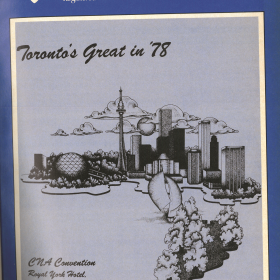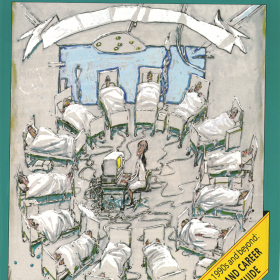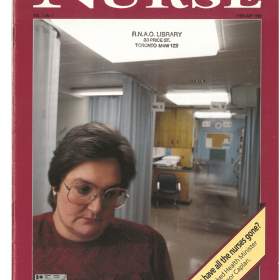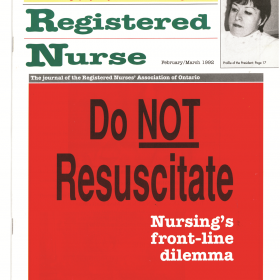Registered Nurse Journal has been a benefit of membership with RNAO for decades, and it’s changed just as much over the years as members have.
There’s a small detail in each issue of RNJ that most people would never notice. But for those of us involved in producing the association’s flagship publication, it’s far from insignificant. It sits at the top-left corner of the contents page, and tells us the “volume” and “number” of each issue. This year marks volume 30 of Registered Nurse Journal. This might imply the magazine has been published for 30 years, and on such an anniversary, of course we’d want to celebrate. And we will. However, the magazine that members have come to know over the last 30 years is just one iteration of many publications members have turned to for their RNAO news.
This year, we look back in time at an invaluable communications tool that has evolved from the News Bulletin in 1946, to RNAO News in 1965, The Registered Nurse in 1989, Registered Nurse in 1992, Registered Nurse Journal in 1995, RN Journal in 1997, and then back to Registered Nurse Journal as we know it in 2002.
Here’s our first look back at that evolution…
In 1946, the RNAO News Bulletin was a glossy, small format publication, measuring a mere six by nine inches. In 1952, it got a bit of a facelift, but the format and size stayed the same. By 1957, the news of the association warranted more space, and the News Bulletin increased in size to a standard letter-sized sheet of paper.
The News Bulletin became RNAO News in 1965, taking on a number of different looks while under the same name. In 1972, the cover featured a new logo and news that, going forward, the symbol on that cover issue would appear on all printed materials published by RNAO. It was the association’s first visual identity of sorts. The symbol remained on the cover for 13 years, disappearing with the introduction of a more updated look in 1985.
In 1989, the publication cycle reset, and volume 1 of the 30 volumes we’re celebrating this year was born. The Registered Nurse was designed and published externally. “We’re looking to the future with hope and anticipation,” the contents page read. “As nursing’s newest quarterly magazine…we will be bringing you coverage of the issues that are sure to shape the future of your profession. With your ideas, comments and criticisms, we hope to support one of Nightingale’s fundamental theories: that good nurses are educated, not trained. Welcome to our first issue.”
In 1995, Registered Nurse became Registered Nurse Journal to “…enhance the professionalism of the journal and lend increased credibility to its articles.” The changes were subtle, but staff said they were meant to “…symbolize RNAO’s efforts to increase its profile and nursing’s voice.” Two years later, the magazine got yet another facelift, but more importantly, publication moved in house, under the control of the communications department. Its first in-house managing editor, Julie Abelsohn, wrote in 1997 that the shift “…means we have more control over the quality of the publication and more direct contact with you, our readership.”










